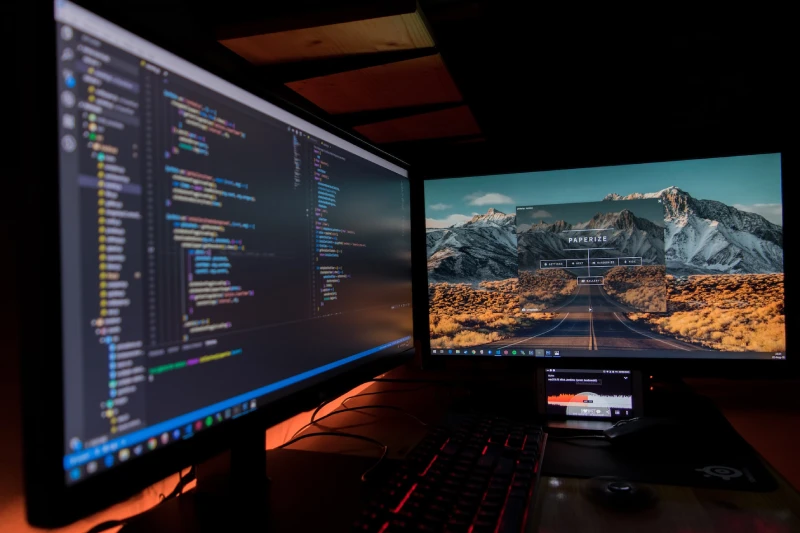How Is The Debugging Process Held?
6 min read
The debugging process is the process of identifying and fixing errors or bugs in a computer program. It is an essential part of the software development process and can involve a range of techniques and tools.
Table of Contents
There are several steps involved in the debugging process:

Identifying the error:
The first step in debugging is to identify the error or bug in the program. This may involve running the program and looking for error messages or unexpected behavior, or using tools such as debuggers or testing frameworks to find the source of the problem.
Reproducing the error:
In order to fix the error, it is important to be able to reproduce it consistently. This means finding the specific steps or conditions that cause the error to occur.
Analyzing the error:
Once the error has been identified and reproduced, the next step is to understand what is causing it. This may involve examining the code, reviewing relevant documentation, or testing different hypotheses to determine the root cause of the problem.
Fixing the error:
Once the cause of the error has been identified, the next step is to fix it. This may involve modifying the code, updating dependencies, or changing configuration settings.
Testing the fix:
After the error has been fixed, it is important to test the program to ensure that the fix has resolved the problem and that there are no other unintended consequences.
The debugging process can be time-consuming and may require persistence and problem-solving skills. However, it is an essential part of the software development process and is necessary to ensure that the program is working correctly.
What are the Debugging Tips and Techniques?

Here are some general tips for debugging code:
Isolate the problem:
Determine where the problem is occurring by narrowing it down to a specific section of code or function.
Use print statements:
Print out the values of variables at different points in your code to understand how they change and identify where the problem may be occurring.
Use a debugger:
Many programming languages have debuggers that allow you to step through your code line by line and inspect the values of variables at each step. This can be very helpful for identifying the root cause of a problem.
Test small pieces of code:
Rather than trying to test the entire program at once, try breaking it down into smaller pieces and testing each piece individually. This can help you identify where the problem is occurring more quickly.
Check for syntax errors:
Make sure your code is properly formatted and there are no syntax errors that could be causing issues.
Check for logic errors:
Make sure the logic of your code makes sense and is doing what you expect it to do.
Check for typos:
Make sure you have spelled everything correctly and that you are using the correct case.
Consult documentation:
If you are using a library or framework, consult the documentation to ensure that you are using it correctly.
Seek help:
If you are stuck, don’t be afraid to ask for help. This can be from peers, online resources, or even asking a specific question on a forum or Stack Overflow.
How to Analysis Debugging Process

Debugging is the process of finding and fixing errors in software. It is an important skill for any programmer to have, as it helps you identify and fix problems in your code, ensuring that it runs correctly and performs the tasks it was designed to do.
There are several steps you can follow to effectively debug your code:
Identify the error:
Start by identifying the error message or behavior that you are experiencing. This will help you narrow down the source of the problem.
Reproduce the error:
Try to reproduce the error consistently. This will help you understand the circumstances under which the error occurs, which can be important for identifying the root cause.
Inspect the code:
Look at the code around the point where the error occurred. Try to understand what the code is supposed to do and see if you can spot any mistakes.
Test your hypothesis:
Once you have a hypothesis about the cause of the error, try modifying the code to test your hypothesis.
Repeat the process:
If your change did not fix the error, go back to step 3 and continue the process until you find and fix the problem.
It is important to be systematic and methodical when debugging, as this will help you identify and fix problems more efficiently. It can also be helpful to take breaks and come back to the problem with a fresh perspective, as this can sometimes help you see the problem in a different light.
What are the different tools for debugging?

There are many debugging tools available, and the best one to use can depend on the specific situation and the programming language you are using.
Here are some common debugging tools that are used in various programming languages:
GDB: GNU Debugger is a command-line debugger for C, C++, and other languages that run on Unix-like systems.
LLDB: LLVM debugger is a command-line debugger for C, C++, and other languages that run on macOS, Linux, and Windows.
Visual Studio Debugger: This is a debugger for C, C++, and other languages that is built into the Visual Studio IDE for Windows.
Xdebug: This is a PHP extension that provides debugging and profiling capabilities.
Firebug: This is a browser-based debugger for JavaScript, HTML, and CSS that runs in Firefox.
Chrome DevTools: This is a browser-based debugger for JavaScript, HTML, and CSS that runs in Google Chrome.
Valgrind: This is a memory debugging tool for C and C++ programs that runs on Unix-like systems.
Purify: This is a memory debugging tool for C and C++ programs that runs on Windows and Unix-like systems.
Electric Fence: This is a memory debugging tool for C and C++ programs that runs on Unix-like systems.
OllyDbg: This is a debugger for Windows programs that disassembles and debugs executables.
How do you debug applications?

Debugging applications is an important part of the software development process. It involves identifying and fixing errors or issues that prevent the application from functioning correctly. There are a number of techniques and tools that can be used to debug applications, including the following:
Using a debugger: A debugger is a tool that allows you to step through the code execution, line by line, and inspect the values of variables at each step. This can help you identify where the error is occurring and why.
Printing debug statements: Inserting print statements or logging messages in the code can help you understand what is happening at different points in the execution.
Using an error log: Most applications generate an error log that records any errors or issues that occur. This can be a useful resource for debugging.
Inspecting the state of the application: Examining the state of the application, such as the values of variables and the contents of data structures, can help you understand what is happening and where the issue might be.
Testing: Testing the application thoroughly can help you uncover any issues that may not be immediately apparent.
Debugging tools: There are many debugging tools available that can help you identify and fix issues in your application. Some examples include memory profilers, performance analyzers, and static code analysis tools.
It’s important to keep in mind that debugging can be a time-consuming and iterative process, and it may require you to try a variety of techniques and approaches before you are able to identify and fix the issue.






